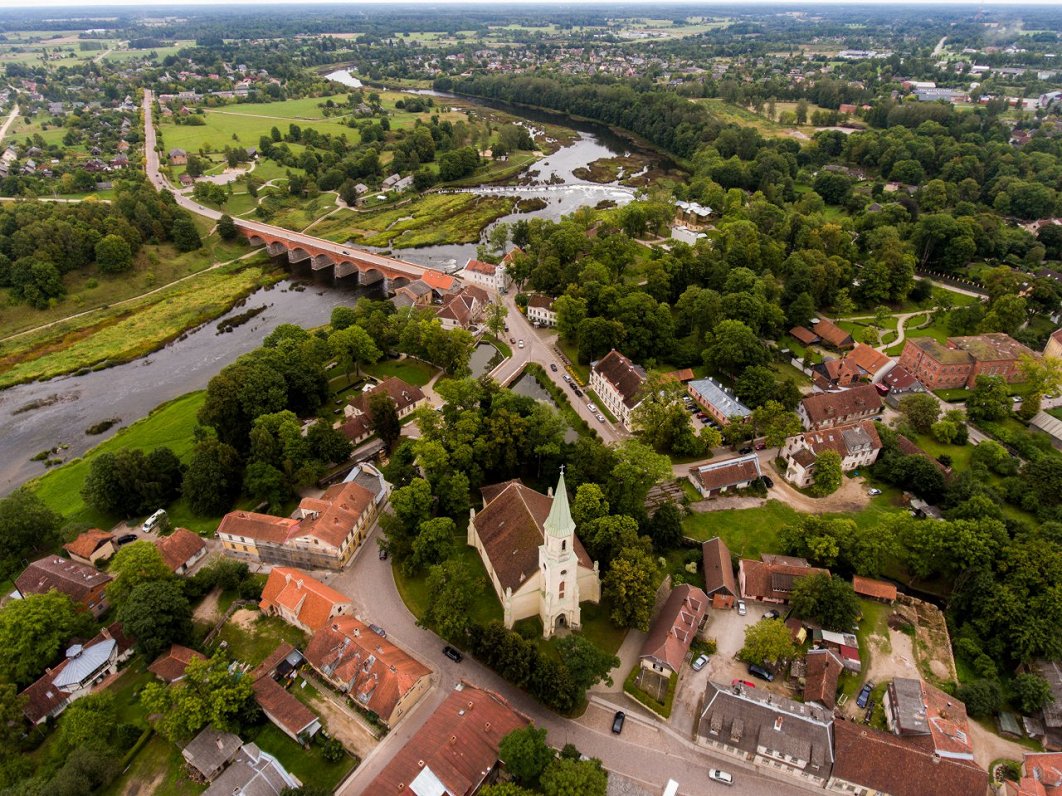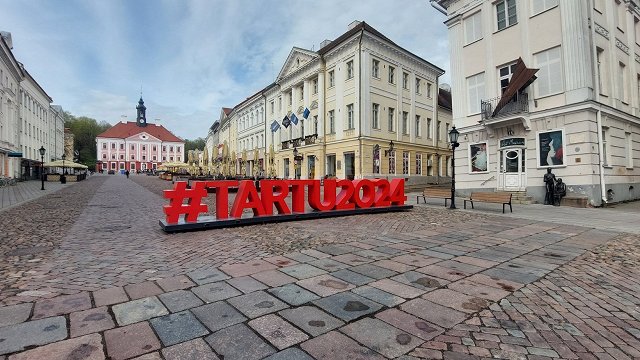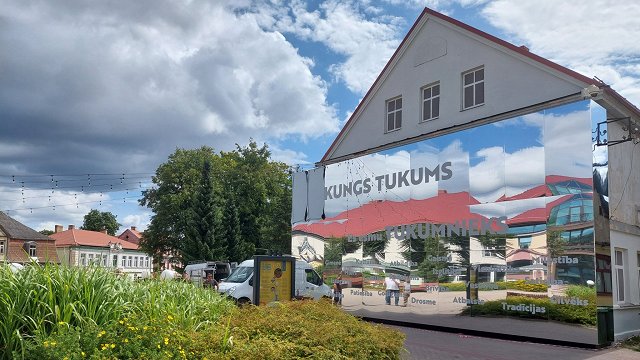Kuldīga, the pearl of Kurzeme, is a model of how to restore heritage and nurture identity. But it shouldn’t rest on its laurels, as there’s still a lot of untapped potential in this beautiful town.
In some ways, Kuldīga is a lucky place. Its golden age in the 17th and 18th centuries bequeathed a delightful old town, which has been remarkably unscarred by subsequent world wars and central planners.
But it has also done a lot to help itself. Since 1991, Kuldīga’s citizens have put their hearts and souls into making it a joy to visit and live in. And the result is already world class.
Venice on the Venta
While today Kuldīga is a delightful backwater with just 10,000 inhabitants, four centuries ago it was a hub of activity by the name of Goldingen. The Dukes of Courland who made it one of their capitals traded with faraway continents, did diplomacy with great powers, and established cutting edge industries.
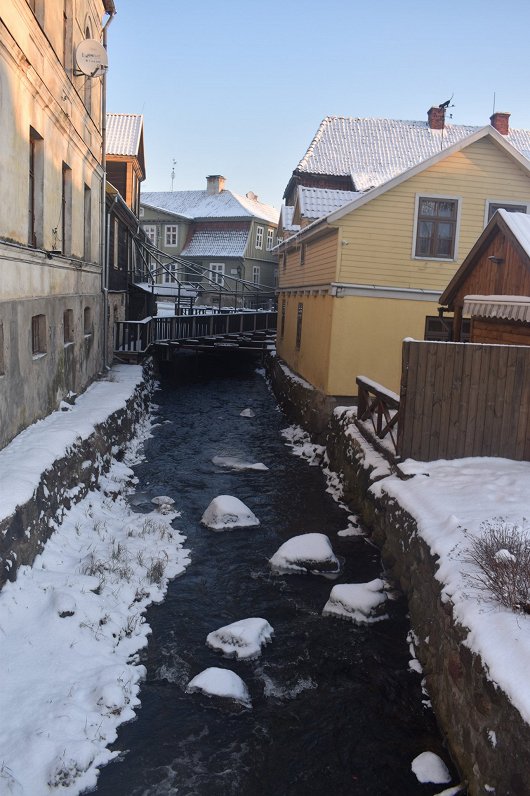
The duchy was so well run that merchants and craftsman from far and wide settled there, producing a unique urban mix. Many a painter and tourist has since been enchanted by the cobblestoned lanes, timber houses and chuckling canals of the “Venice of the North” -- a nickname that may also contain an element of the local sense of humor.
As well as being pretty, it’s fun. Summer is a cavalcade of festivals, including a naked collective jog over the stately Venta River bridge, and there are some of Latvia's best bars and cafes, which Covid-willing should be open again this year. Even nature gets into the groove, as every spring vimba fish jump up the Ventas rumba, Europe’s widest waterfall.
Decades ago, the townsfolk realised what a treasure they have and set about preserving it. Under the guidance of the Kuldīga Restoration Centre, locals have learned to restore their historic wooden windows and shutters instead of putting up plastic junk. They cherish traditional storytellers and modern artists alike, and dish up peasant goodies like potato-and carrot sklandrauši pies along with frothing up a pretty good latte.
All of which is worth sharing with the world, which is why Kuldīga recently applied to become a UNESCO World Heritage Site. And it would no doubt do a fantastic job as European Capital of Culture.
Communication is key
But before they start popping champagne by the rumba, there’s work to be done. For starters, they need to present their case better. The author of this article spoke on the phone to the municipal official in charge of the bid, who beyond repeating some stock phrases about getting the entire community involved in the bid (who on past performances are stellar), didn't give any details about what is planned. Another county staffer suggested we contact them again at the end of summer.
This is not oustanding public relations, even if the exact plans are not yet ready to be revealed, especially when compared with the enthusiasm of the other candidate cities who did not have similar reservations. And it is a pity, because as already said, Kuldīga has so much to offer.
But instead of griping, we are going to boldly suggest five cultural events of our own that Kuldīga could stage to entertain and illuminate Europe in 2027 given its unique mix of people, history, architecture and artistry. Or any other time, for that matter.
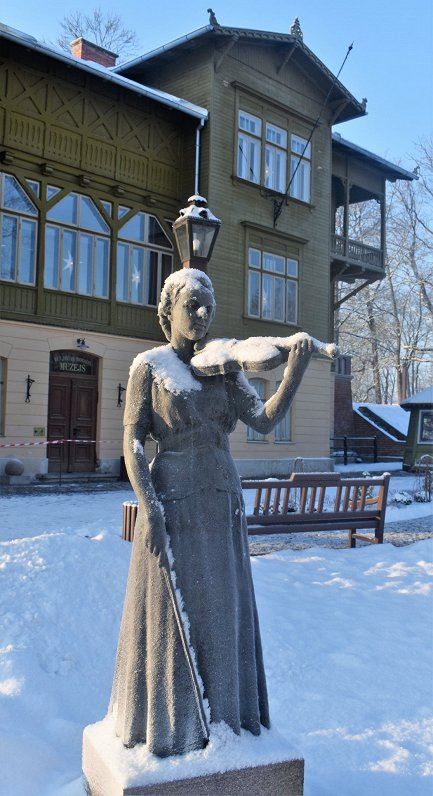
Top Five Kuldīga Culture Ideas
- The Gathering of the Peoples
Kuldīga’s unique urban landscape resulted from blending Latvian, German, Russian, Polish, Roma and Jewish influences over the centuries. The town has a track record of sensitively acknowledging its multicultural past, for example the restored synagogue is now the main library and a museum of Jewish heritage. Bringing together contemporary musicians, storytellers and chefs from all these cultures could rekindle the successful synergy. And the Duchy of Courland had colonies in Gambia and Tobago – add their spice to the mix too.
- The Thinking Outside the Box Festival
Dāvids Klaviņš is an iconoclastic piano maker who has completely re-imagined the instrument, crafting giant vertical instruments and the diminutive Una Corda. In 2020 he relocated to Kuldīga, proving that the town is a magnet for original minds. Get a load of smart people with seemingly crazy ideas about everything from quantum physics to permaculture to have a drink and a good-natured argument, then sit down and write, paint or sing it all into a fondue of intellect and imagination. Then see where that takes us...
- The Labours of Love Network
Īvande Manor, a beautiful baronial pile south of Kuldīga, is been meticulously restored by dynamic young couple Kristiāna and Renārs Sproģis. They’ve poured their own time, money and sweat into the project, showing what people who deeply care about heritage can achieve. Grassroots restorers from the Baltics and beyond could gather at Īvande for seminars, balls and garden parties, sharing knowledge and forging plans together.
- Voices from the Fringes
Alsunga, to the west of Kuldīga, is home to the Suiti, a small but resilient cultural group with distinct costumes, religious beliefs and music. They are famous in Latvia for the women’s ensemble Suitu sievas, who employ a unique drawn-out vocal style. Wouldn’t it be wonderful to enjoy concerts given by these ladies and other performers with unusual sounds, like Tuvan throat singing, konnakol or field hollering. Imagine them all in a choir...
5. The Year of asking BIG Questions
South of Kuldīga near Skrunda, the Soviets constructed a 19-storey high radar receiver to track incoming missiles in case of Armageddon. The monstrosity was blown up in 1995 as part of a deal withdrawing Russian troops from Latvia, and the 1,000 hectare site which once included apartment buildings, a hospital, a hotel and naturally a bomb shelter is now a wasteland, sometimes used for military training exercises. Or an intriguing possibility... War and peace, the promise and pitfalls of technology, secrecy versus openness would provide red meat for artworks, discussions, films and more. Plus the site could host the most epic paintball games ever.
